


I drove to Anza-Borrego Desert State Park to see the wildflowers everyone was talking about. What I didn’t expect to find was over one hundred full-sized metal sculptures scattered throughout a town in the middle of the park!
The sculptures are the work of Ricardo Breceda, born in Durango, Mexico and now a resident of Borrego Springs, California, the town right in the middle of Anza-Borrego Desert State Park. Breceda was a construction worker until a serious construction accident forced him to quit and focus on something less strenuous, like selling exotic boots. At some point he is said to have traded a pair of boots for a welding machine, which he began to experiment with.
After taking his then 6-year-old daughter to see the film Jurassic Park III in 2001, he asked her what she wanted for Christmas, and of course she wanted a dinosaur. So he did what any decent, loving father would do – he built a giant metal Tyranosaurus Rex for her!
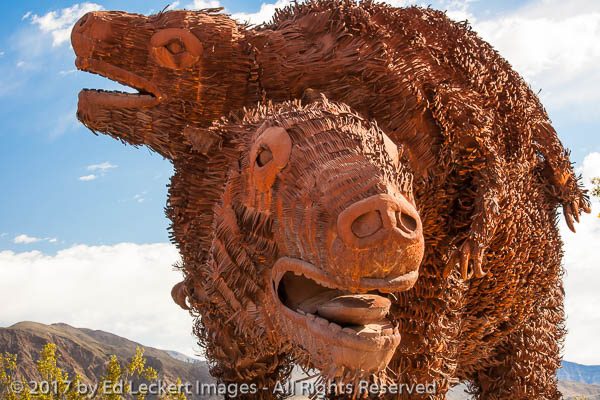
“Harlan’s Ground Sloth”, by Ricardo Breceda, Borrego Springs, California. Fossil remains of this animal date from about 2.3 million years ago when the Anza-Borrego area had a savanna-like environment. The skin contained dermal ossicles – pieces of embedded bone.
Well, one thing led to another, and his work was discovered by local philanthropist Dennis Avery, who paid him to construct more than one hundred sculptures on his property. Avery was particularly interested in fossilized creatures in the Anza Borrego Desert as well as mythological creatures.
Breceda also created a tribute to local farm workers, as well as sculptures based on other varied subjects, which are spread throughout the town and elsewhere.
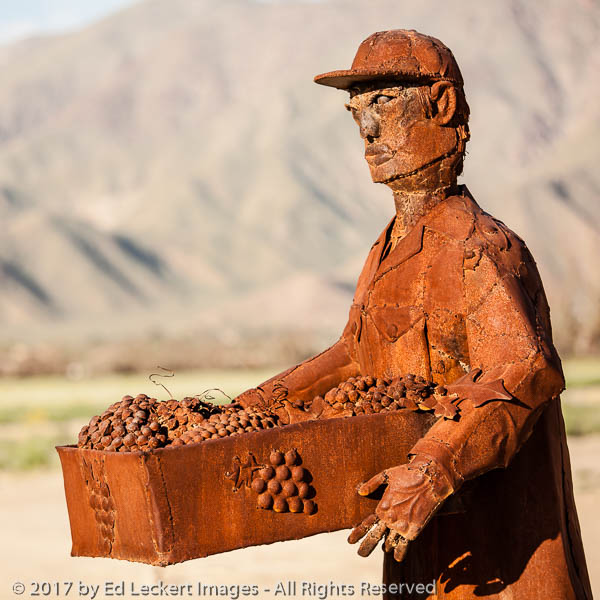
“Farm Workers”, by Ricardo Breceda, Borrego Springs, California. Migrant farm workers harvested Borrego Valley grapes until the United Farm Workers union targeted the Di Giorgio Fruit Corporation during the 5-year grape strike and national grape boycott from 1965-1970. The various strikes and heated court battles brought an end to harvesting grapes in the valley.
People now come to Borrego Springs from around the world to see the amazing 130 full-sized metal sculptures, some of which are inspired by creatures that roamed this same desert millions of years ago.
Enjoy!
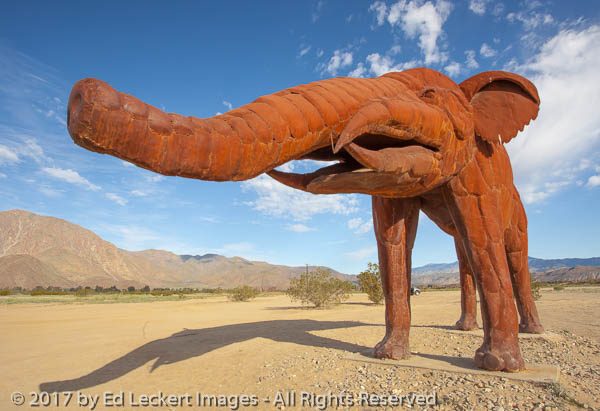
“Gomphothere”, by Ricardo Breceda, Borrego Springs, California. The oldest fossil specimen of this elephant-like animal dates back 9 million years ago. It was a hippopotamus-size animal with short legs and four tusks.
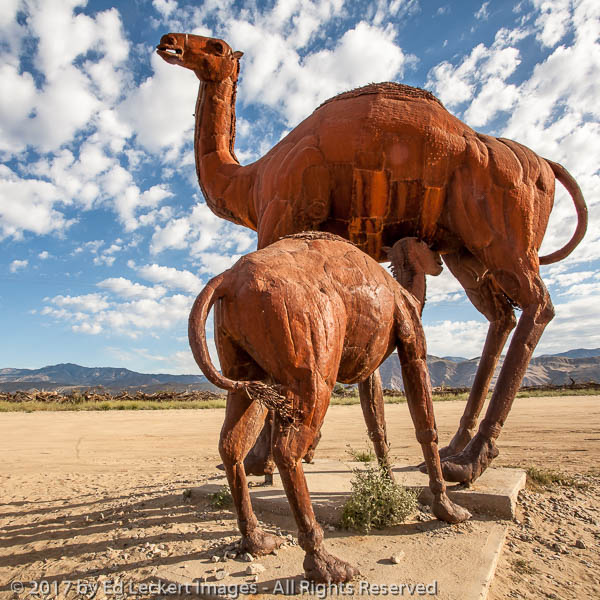
“Camelops”, by Ricardo Breceda, Borrego Springs, California. Camelids are distinguished by ipsilateral limb pairs; that is, the fore and hind limbs on the same side move forward and back at the same time.
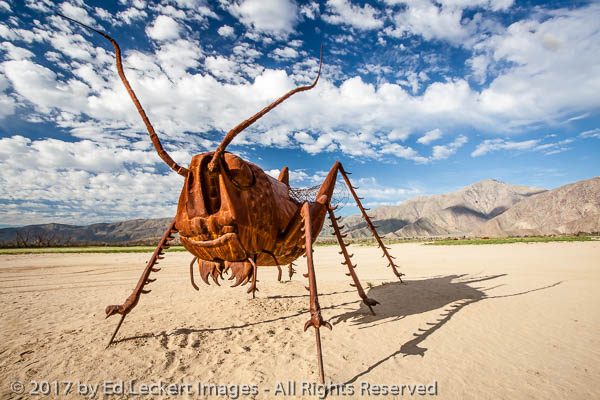
“Scorpion and Grasshoppers”, by Ricardo Breceda, Borrego Springs, California. Scorpions are venomous invertegrates. The highest concentration of scorpions is found in the southwest deserts. This eight-legged, nocturnal arachnid lays in wait to ambush its prey which can be spiders, centipedes, other scorpions, or insects such as grasshoppers. Grasshoppers eat grasses, leaves, and cereal crops.
